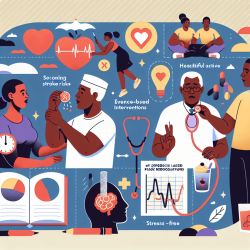Introduction
As professionals dedicated to improving children's health outcomes, it's crucial to stay informed about emerging research that can guide our practices. A recent study titled "Spinal pain increases the risk of becoming overweight in Danish schoolchildren" sheds light on an important health issue. This study highlights the association between spinal pain and the risk of becoming overweight in children, a concern that warrants attention and action from practitioners.
Key Findings
The study conducted a prospective cohort analysis of 1080 Danish children aged 11-13 years. It found that children who reported spinal pain were at a higher risk of becoming overweight two years later. Specifically, the incidence rate of overweight was 5.3% for children with spinal pain compared to 1.6% for those without. The risk increased with the frequency and number of spinal pain sites.
Implications for Practice
Understanding the implications of these findings can enhance the way practitioners approach children's health. Here are some strategies to consider:
- Early Identification: Regular screenings for spinal pain in school-aged children can help identify those at risk of becoming overweight.
- Interdisciplinary Collaboration: Collaborate with physical therapists and pediatricians to create comprehensive care plans addressing both spinal health and weight management.
- Promoting Physical Activity: Encourage activities that are gentle on the spine but effective in maintaining a healthy weight, such as swimming or cycling.
- Education and Awareness: Educate parents and children about the importance of spinal health and its potential impact on weight.
Encouraging Further Research
While this study provides valuable insights, it also opens the door for further research. Practitioners are encouraged to explore the following areas:
- Longitudinal studies to confirm these findings over a longer period.
- Investigating the role of psychological factors in the relationship between spinal pain and weight gain.
- Exploring interventions that can effectively address both spinal pain and obesity in children.
Conclusion
This research highlights a significant association between spinal pain and the risk of becoming overweight in children. By integrating these findings into practice, we can better address the multifaceted health needs of children and work towards improved outcomes. For practitioners, this means taking a proactive approach in identifying and managing spinal pain, while also considering its potential impact on weight.
To read the original research paper, please follow this link: Spinal pain increases the risk of becoming overweight in Danish schoolchildren.










